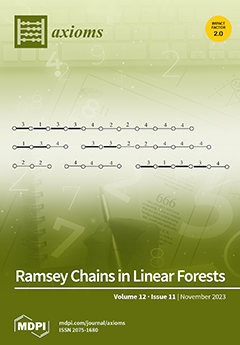Spectral graph theory is like a special tool for understanding graphs. It helps us find patterns and connections in complex networks, using the magic of eigenvalues. Let
be the graph and
be its adjacency matrix, then
is singular if the determinant of the adjacency matrix
is 0, otherwise it is nonsingular. Within the realm of nonsingular graphs, there is the concept of property
, where each eigenvalue’s reciprocal is also an eigenvalue of
. By introducing multiplicity constraints on both eigenvalues and their reciprocals, it becomes property
. Similarly, the world of nonsingular graphs reveals property
, where the negative reciprocal of each eigenvalue also finds a place within the spectrum of
. Moreover, when the multiplicity of each eigenvalue and its negative reciprocal is equal, this results in a graph with a property of
. Some classes of unweighted nonbipartite graphs are already constructed in the literature with the help of the complete graph
and a copy of the path graph
satisfying property
but not
. This article takes this a step further. The main aim is to construct several weighted classes of graphs which satisfy property
but not
. For this purpose, the weight functions are determined that enable these nonbipartite graph classes to satisfy the
and
properties, even if the unweighted graph does not satisfy these properties. Some examples are presented to support the investigated results. These examples explain how certain weight functions make these special types of graphs meet the properties
or
, even when the original graphs without weights do not meet these properties.
Full article




